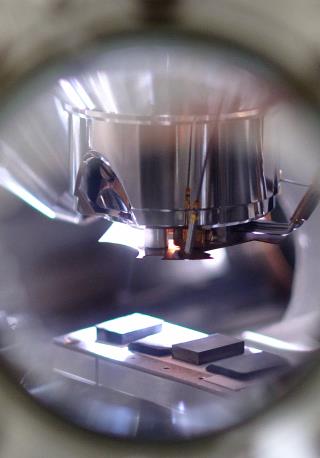Electron/X-ray matter interaction at the surface level

Electron spectroscopy for chemical analysis (ESCA), is a widely used surface analysis technique for materials characterisation. This technique includes X-ray Photoelectron Spectroscopy (XPS) and Auger Electron Spectroscopy (AES).
XPS provides quantitative elemental and chemical state information from the upper most 10 nm of material. The XPS spectra are obtained by illuminating the sample with X-rays while simultaneously measuring the kinetic energy of the photoelectrons emitted from the surface. The technique is used in many diverse applications, ranging from multilayer coatings on architectural glazing to drug eluting thin films in the pharmaceutical industry.
AES, is an SEM-based analytical technique that uses Auger electrons for determining the chemical composition from the surface of a solid material. The AES technique allows the detection of all elements except H and He, with an average detection limit of 0.1% (atomic). The main advantage of AES over the other surface-specific techniques is its high spatial resolution (down to 10 nm). JEOL JAMP-7830F can perform Auger electron spectrum analysis, morphological observation with secondary electron imaging, depth profiling with ion-beam sputtering, and elemental distribution by Auger electron mapping.
XPS provides quantitative elemental and chemical state information from the upper most 10 nm of material. The XPS spectra are obtained by illuminating the sample with X-rays while simultaneously measuring the kinetic energy of the photoelectrons emitted from the surface. The technique is used in many diverse applications, ranging from multilayer coatings on architectural glazing to drug eluting thin films in the pharmaceutical industry.
AES, is an SEM-based analytical technique that uses Auger electrons for determining the chemical composition from the surface of a solid material. The AES technique allows the detection of all elements except H and He, with an average detection limit of 0.1% (atomic). The main advantage of AES over the other surface-specific techniques is its high spatial resolution (down to 10 nm). JEOL JAMP-7830F can perform Auger electron spectrum analysis, morphological observation with secondary electron imaging, depth profiling with ion-beam sputtering, and elemental distribution by Auger electron mapping.


